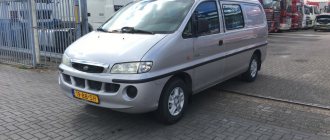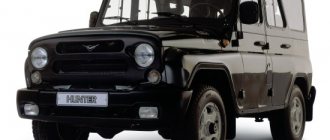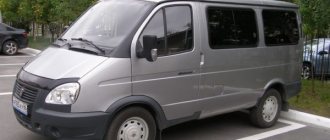Off-road vehicles are a rather diverse and controversial segment. It is characterized by both high power and functionality, and in some cases demonstrates comfort and outstanding ergonomic qualities. Snowmobiles, as a rule, are divided into two groups - dynamic mountain vehicles for active recreation and utilitarian models designed to perform practical tasks. The Arctic Cat Bearcat 570 XT modification, in accordance with the official positioning, rather belongs to the second category, but, as operating experience shows, this option is also interesting from a sporting point of view.
General information about the snowmobile
Although the model represents the entry level even in its own Bearcat family, its capabilities are enough to confidently represent the class of utilitarian devices. In addition, the balanced power filling and thoughtful design base allows the Arctic Cat Bearcat 570 XT to be used as a multi-purpose vehicle. Of course, entering the mountain snowmobile class requires a high level of ergonomics from the applicant. Both the suspension and electronic assistants are responsible for this area in this model. Thus, the display allows the user to choose between analogue and digital representation of tachometer and speedometer readings. In addition, the instrument panel contains trip meters, an odometer, as well as hazard lights and reverse indicators.
Engine
The Arctic Cat 570 snowmobile has a two-stroke two-cylinder power unit, which, upon reaching 7300 crankshaft revolutions per minute, develops a rated output power of 45.53 kilowatts, which translates to 61.9 horsepower. Each cylinder has a diameter of 73.8 millimeters, and their total working volume is 565 cubic meters. The piston stroke is 66 millimeters. This unit, as standard for all snowmobiles, uses an air cooling system. One VM34 carburetor is installed per cylinder. CDI condenser cooling system.
Main technical characteristics
If we discard the power basis, design and technological features, then the only thing that will allow us to classify the model as a junior class of utilitarians is its dimensions. The compact Arctic Cat Bearcat 570 XT, the technical characteristics of which are presented below, is partly due to its modest size and is maneuverable and dynamic:
- The length of the device is 3480 mm.
- Width – 1270 mm.
- Track length – 3912 mm.
- Track width – 508 mm.
- Ski width – 205 mm.
- The gap between the skis is adjustable in the range of 1016 - 1118 mm.
- The lug is 35 mm.
- Weight – 292 kg.
- The transmission is an Arctic mechanism, equipped with a speed sensor.
- The drive system is with a roller pulley.
Characteristics of the power filling
The model is equipped with a budget carburetor engine of 565 cm2. The two-stroke power plant is equipped with an air cooling system and reverse, which is activated by pressing the corresponding button. However, power ratings vary depending on the specification of the Arctic Cat Bearcat 570 XT. The characteristics of the basic version in terms of power output are 62-64 hp. With. The more expensive XT Limited modification provides 123 hp. With. But in this case, the device is equipped with a 1100 cc unit.
From the point of view of work quality, the power components of the lower configuration also perform well. As the owners note, the 62-horsepower snowmobile confidently copes with difficult terrain, maneuvering along winding forest paths. Of course, the behavior of the technology reveals its utilitarian essence, which determines endurance and high power output. At the same time, the Arctic Cat Bearcat 570 XT model is noted for its economy. Fuel consumption, for example, is only 15 liters per 100 km. This is despite the fact that already average utilitarian devices “eat up” about 35 liters. True, a lot depends on the nature of the ride. Still, the younger representative of the Bearcat is often used as a mountain modification. The model turned out to be successful in terms of handling, which captivates many fans of extreme recreation.
Trolley wheels
Now about the rolling wheels. Maybe I wouldn’t have done them at all, but there was so little snow this season that I had to throw it back onto the paving stones from the beds, and still this was not enough and the ski skate scratched the tiles deeply and very loudly.
The solution was found and implemented in one evening.
A little profile pipe, four rollers from a hardware store and a piece of polypropylene pipe to support the ridge turned into elegant carts.
The essence is clear from the photo, and it only takes a few seconds to roll the cart under a ski raised by the toe.
The chosen fixation scheme is reliable and simple. Now there are no problems with moving around the yard and even maneuvering in the garage; the main thing is to choose a support point for the cart a little closer to the toe during manufacturing. These are, in fact, those little things that begged for top priority. You also need to find an option for attaching the license plate, install a couple of spotlights or even xenon, install a power cable for a winch that has not yet been purchased, optimize the engine compartment and carry something in it, but that’s already in the next snow. The maximum that remains in the near future is to preserve the snow and hang it from the ceiling. How? And something like in the note “Lighter than air.”
Other notes on the topic:
- Warm Cat;
- Cat eyes.
Previous entry Surprise prize Next entry Lighter than air
Design Features
First of all, it is worth highlighting the Twin Spar platform. This is the manufacturer’s proprietary chassis, which is specially designed for long trips in comfort. Its design is made of two spar beams that take on the load from the steering column and the tunnel. Fixation of parts is ensured by blind rivets, which increases the durability and rigidity of the device. No less remarkable is the Diamond Direct Drive system. Thanks to the ACT gearbox, the developers have ensured a reduced rotational speed of the drive mechanism in the track section without loss of speed. As for the working base in the lower part of the Arctic Cat Bearcat 570 XT, it is made of the type of movable rail mechanisms. This device allows you to remove the passenger seat or, conversely, install a third seat. Flexibility in the formation of the design base also contributes to the expansion of the range of tasks that the snowmobile is capable of performing.
Advantages and disadvantages of Arctic Cat Bearcat machines
Owners of the unpretentious Bearcat 750 snowmobile noted a number of advantages:
- Significant load capacity. The device, released in 2009, can carry up to 500 kg of cargo.
- Power and reliability. The Arctic snowmobile is designed for long trips.
- Compactness. The width of the device is 132 cm and the length is 325 cm.
- Comfortable. The comfortable seat makes the ride pleasant, and the open trunk allows you to store a lot of things.
Of course, it was not without its drawbacks. The owner will have to tinker with the starter and traction. But one visit to the workshop will be enough to solve possible problems.
Optional snowmobile filling
Already in the standard version, the snowmobile user receives push-button engine reverse, electric start, combined optics of four halogen headlights, a digital-analog instrument panel, etc. It is worth special mentioning indicators and heating systems. The first are represented by fuel and oil consumption indicators. Heating is provided on the steering wheel grips, and it works in two modes. It is worth remembering the utility of the Arctic Cat Bearcat 570 XT, which is also manifested in the elements of additional equipment. This particularly applies to the tow bar, seat pan and reinforced bumpers for tough conditions. This list expands significantly in the case of the premium package. The set of equipment for such a snowmobile, for example, includes a cargo platform, special preparation for a winch, 30 cm ski extensions, an arch, a beacon, a trunk, etc. The choice of options is large, but each addition is not cheap, as befits a quality product.
Connection
The age-old dilemma is connections. Since our ignition switch is essentially not one at all, you can only connect to it with a pin, which, when the cable is pulled out, does the same thing as turning the key to zero - it closes the ignition system to ground with its contacts. Therefore, we simply connect with a pin in parallel with contacts 1 and 2 of the ignition switch connector:
The complete diagram sheet is here. True, I have a four-pin connector, so it’s better to check with a tester which one is responsible for what, and not trust to blind chance. There is, as we see, a permanent plus on the contact that is locked, but why do we need it? To set the toggle switch anyway? I wanted to automate the process of turning on additional devices and even soldered a small gadget:
This is nothing more than a full-wave rectifier on a db107 diode bridge, at the input of which two black wires are soldered in blue heat shrink according to the photo, and at the output - in parallel, a low-current coil of an electromagnetic relay SRSB-12VDC-SL-C and a smoothing capacitor 1000uF/50V. In theory, being connected to the additional load connector (there is a changeover), the same one that dangles near the battery and the main one - and the only one! - a standard fuse; when the engine starts, this rectifier supplies a relay with direct current, which closes our new circuit directly from the battery without any toggle switches. Which is exactly what is needed. Let's see what we have there.
But why fence the garden even with such trifles? It is enough to look at the electrical diagram again and check with a tester just two wires going to the standard instrument panel, the connector of which is located in the most advantageous place for us:
The black one here is ground, but the red one with a blue stripe is the circuit after the relay regulator. That is, a circuit where +12V appears only after the engine is started, and not from the generator rectifier, but stabilized ones. Well, as much as a crude relay-regulator can stabilize such a brutal apparatus as a snowmobile, but this is quite enough for us. In the diagram these are pins 1 and 2.
I have already posted a complete sheet of this circuit above, and here is another, general one. At any speed, the voltage is stable, except that at low idle it can drop less than ten, which leads to the same Montana switching to its battery, but this is a direct path to adjustment XX. It is advisable to make all connections to the on-board network detachable, and through fuses it is absolutely necessary. I connected the cigarette lighter directly to the battery terminals through a separate fuse
In corrugation, with all precautions along the laying route, tea, permanent connection:
Maintenance nuances
Like all members of the family, this version was developed with endurance and unpretentious maintenance in mind. However, to maintain operating condition, the snowmobile must be regularly checked for the quality of assembly of parts, the function of the power filling and the overall condition of the structure. The unit should also be thoroughly cleaned after each use. If any problems are detected, it is recommended to immediately contact the dealer service center. However, some spare parts for the Arctic Cat Bearcat 570 XT can be updated independently. This applies in particular to the suspension arm, belt, air intake, battery pack, engine cover and crankcase. Also, many owners of this model complain about deviations in fuel mixture and oil consumption. If such nuances are identified, it is recommended to replace or reconfigure the fuel pump.
Positive reviews about the snowmobile
The main advantages of this snowmobile include functionality, versatility in operation and reliability. These are the main characteristics for utilitarian modifications, but this device also has special qualities. The creators endowed the equipment with high ergonomics, provided not only by new technologies in the design, but also by electronic systems. Thus, users note the ease of use of the Arctic Cat Bearcat 570 XT dashboard. Reviews highlight the availability of information presentation in several modes. There are also positive opinions regarding the additional equipment, which is rare in its richness when compared with other entry-level snowmobiles.
Manufacturer's price for new
Since this model is already outdated and discontinued, it is almost impossible to find a new snowmobile. Some companies offer unused trucks from earlier years of production. For example, a 2016 model will cost about 899 thousand rubles in this case.
On the secondary market you can see many offers for sale of Arctic Cat 570 with mileage of various years of manufacture. The price for trucks from 2008-2012 varies between 270-550 thousand rubles. The cost of individual copies reaches 650 thousand rubles. The price tag for used equipment is determined based on the year of manufacture, general technical condition and mileage.
Negative reviews
There are few reviews with disappointment in the technology. They mainly relate to the nuances of operation, which are unexpectedly revealed in the power filling. There are also complaints about the average power. The structural basis significantly expands the possibilities for using this snowmobile, but the low-performance engine sets its limits. However, a lot depends on the tasks for which the Arctic Cat Bearcat 570 XT is purchased. Reviews from owners who use the device exclusively for transporting heavy loads are not particularly complimentary in terms of traction properties. This is due to the fact that, like the users of snowmobiles in this series themselves, the manufacturer is more likely to consider the models as sports. Although, officially they are classified as powerful and practical utilitarians.
temperature sensor
Many people who study thematic forums and at least somehow think about the proper operation of equipment have heard how many copies have been broken around the control of engine temperature conditions. So for a long time I could not decide what to do and what to do. In the end, I just went and ordered what I had my heart set on - a device that measures the temperature of the exhaust gases.
This is a two channel Koso Dual EGT Meter. Why not under the spark plugs? Yes, it’s just that the difference in price with the same CITD is no longer so psychologically great, but it is not the average temperature of the large heat capacity of the cylinder head that is measured, and even through the thermal resistance of the material of the immediately forcibly blown ring of the semiconductor sensor, but precisely what happened literally a moment ago - gases almost at the edge of the exhaust window. What does this give? Yes, at least I am confident that I will see exactly the instantaneous temperature values, and not the readings from under the spark plug integrated with a fairly large time constant of the metal mass. Installation of the sensors themselves is quite simple and does not require special qualifications, because all you need to do is disassemble the spring-loaded joints of the resonator and unscrew the four nuts from the cylinder block studs, drill two holes in the pants and reassemble everything in the reverse order.
I don’t know how deep the sensors should be recessed; intuitively, in other conditions, it would be more correct to be two-thirds of the pipe diameter or even a little less, but I stuck it to the maximum. I think it’s not important, because from a sharp expansion the temperature of the gases drops much faster than from cooling by the walls of the outlet pipe.
The main thing here is not to rest against the casing and ensure ease of installation at the closest possible distance from the cylinders.
The manufacturer recommends four inches from the exhaust port, and I was able to meet this requirement.
You can lay the wires based on your own preferences, their length allows you to do this as you like, but I secured it to the frame on the left side with steel brackets, you never know, plastic ties tend to burst over time. A small digression related to questions already received on the topic. In particular, about the price of devices and their differences. As far as I understand, the Koso Dual EGT Meter indicators themselves are all the same, the difference in price is doubled - the sellers' wishes or something else, but not in the filling or settings. But there is a nuance: the equipment. There are only two of them, these are Koso Dual EGT Meter with Standard EGT Sensors Part number BA006B61 and Dual EGT Meter with Fast-Response EGT Sensors Part number BA006B61X. Their difference is in the sensors. The fast-reacting one differs from the standard one only in that the heat-sensitive element - thermocouple - is not placed in a protective housing and, as a result, has almost zero thermal inertia, and therefore responds to temperature changes instantly.
Do you see a droplet at the end of the probe? This is a thermocouple. A reasonable question arises: why do we need this? Are we building graphs to analyze rapidly changing thermal processes with a high-speed recorder? No. Moreover, the device itself polls the sensors a couple of times per second. So why pay more, especially for a thermocouple that is not protected by a closed housing? I currently have the following sensor:
There are places on the Internet where rumors are spread that devices with a scale in Celsius are noticeably more expensive than those in Fahrenheit. I was all tense, waiting for the parcel. But, no - the scale is selected by simply pressing a button. Those who don’t believe you can look at the instructions, everything is written there in English in black and white. But, we digress, let's move on. Now let's mount the indicator itself. It was more convenient for me to place it to the left of the instrument panel, but to the right of it is the navigator.











